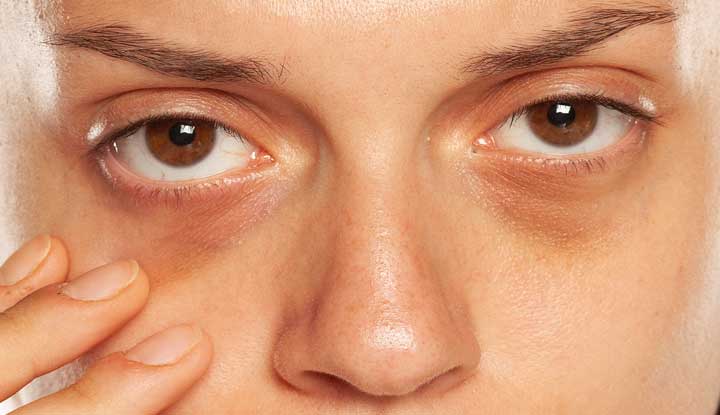Aging, genetics, fatigue and more can all cause dark circles under your eyes. But dark circles aren’t usually a sign of a medical problem. While they’re not typically a cause for concern, you may want to lighten their appearance for cosmetic reasons. Treatments range from home remedies like compresses to medical procedures such as laser therapy.
Advertisement
Cleveland Clinic is a non-profit academic medical center. Advertising on our site helps support our mission. We do not endorse non-Cleveland Clinic products or services. Policy

Dark circles under your eyes mean the area of skin below your eyes looks darkened. This area may appear as shades of blue, purple, brown or black, depending on your natural skin color. Dark circles under your eyes may make you look tired or older than you are.
Advertisement
Cleveland Clinic is a non-profit academic medical center. Advertising on our site helps support our mission. We do not endorse non-Cleveland Clinic products or services. Policy
Dark under-eye circles have many possible causes. But they’re usually not a symptom of a medical problem. Dark circles under your eyes typically aren’t a cause for concern. But you may want to lighten the appearance of your under-eye circles for cosmetic reasons.
Dark circles under the eyes affect people of all ages, races and sexes. All skin types can show varying levels of dark circles, too. Dark circles under your eyes are more common in certain groups of people, though. These groups include:
Dark circles under your eyes can happen for many reasons. One of the most common causes of dark circles is aging. As you age, the skin below your eyes begins to loosen and thin out so the blood vessels under your skin may become more visible. This can darken the appearance of your under eyes. Hollowed areas called tear troughs may develop as well. Tear troughs cause shadows that increase the appearance of puffy eyes.
Other causes of dark circles under your eyes may include:
Advertisement
There are many things you can do at home to get rid of the dark circles under your eyes. Home remedies may include:
If you’re hoping to remove your dark circles fast and permanently, contact a healthcare provider. They can let you know what treatment options are available for your skin condition. Medical treatment options for dark circles under your eyes may include:
Dark circles under your eyes can’t always be prevented. But there are some changes you can make that may help, including:
Advertisement
If you have dark circles under your eyes, it’s probably just a sign of aging, lack of sleep or another common cause. It’s usually not caused by a medical problem. But if you have a dark circle or swelling under just one eye, call a healthcare provider. You may have an underlying health condition that needs to be addressed.
Babies and children can develop dark circles under their eyes for some of the same reasons adults do. The skin underneath their eyes is thin and sensitive so their blood vessels show through more. Dark circles under your baby’s eyes may be caused by genetics, rubbing their eyes or fatigue. They may also be developing a minor illness such as a cold, flu or ear infection.
Other causes of dark circles under your child’s eyes include dehydration, snoring and injuries. Talk with your child’s healthcare provider if you’re concerned about the dark circles under your child’s eyes.
Dark circles under your eyes are a common complaint among people of all ages. They’re usually caused by aging, genetics, allergies or not getting enough sleep. Home remedies and medical treatment options may be able to help remedy the appearance of your under eyes. But if the dark circles persist or you have excessive swelling, be sure to talk to a healthcare provider. They can help you figure out if you have an underlying medical condition that needs special treatment.
Advertisement
Whether you need cosmetic or reconstructive plastic surgery, you’ll need skilled, detailed and compassionate providers. At Cleveland Clinic, we’re here to help.

Last reviewed on 05/25/2022.
Learn more about the Health Library and our editorial process.